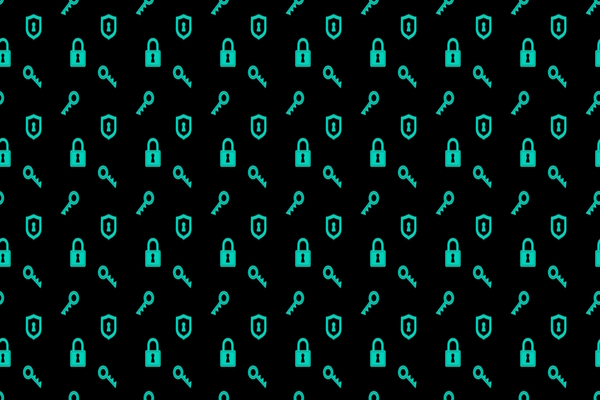Dismantling technical debt
Chelsea Chamberlin at Roc Technologies explains why many organisations continue with a dependency on technical debt in IT their setups

Organisations, especially those with strict security and compliance requirements, often find it difficult to update or replace legacy systems. Bureaucratic processes, budget constraints and the sheer scale of operations can bog down modernisation efforts.
The result is a complex environment where old and new technologies coexist, often in an inefficient way, and it’s what is referred to in the industry as technical debt: an accumulation of outdated, unsupported, legacy systems that organisations continue to rely on despite past efforts of modernisation and transformation.
This mounting burden is not just a concern due to hardware becoming obsolete: inconsistent practices among users and a lack of centralised oversight increase exposure to cyber-attacks, data loss, compliance failures and operational disruption. IT teams and business decision-makers struggle with a lack of visibility; targeted, focussed, modernisation is sorely needed to prevent these risks.
The risks of maintaining the status quo
Years of cumulative ad-hoc implementations in organisations have resulted in an amalgamation of different devices and applications in a single IT infrastructure. If staff feel that official IT channels are slowing them down, they will find workarounds to maintain productivity and efficiency by connecting their own devices. This is more likely to happen when organisations are tied up in bureaucratic red tape, don’t have the money to invest in new technologies or have lost control of their complex infrastructure.
Business users don’t feel enabled by their IT teams, so they take matters into their own hands – ultimately resolving their immediate access and connectivity problems, but contributing to long-term problems in the form of sprawling, uncontrolled technology estates.
Introducing shadow devices makes it practically impossible for IT teams to achieve oversight of the complete stack. If a device hasn’t been approved by IT and Cyber teams, its use could be a violation of a data privacy regulation or other compliance requirement. Unapproved technologies may also lack the required security measures, allowing them to be gateways for bad actors to breach before moving through the rest of the estate.
Security risks can also be present in the context of outdated legacy systems. It might be that critical patches haven’t been added or misconfigurations have been made when new apps or solutions have been set up.
If we look specifically at the UK public sector, the government recently estimated that legacy IT systems - those that are still in use but built on older technologies or architectures that are hard to maintain and secure, and are often no longer fully supported by vendors -made up 28% of the public sector’s IT estate, with 319 legacy solutions still in use by January 2025. It’s an extremely wide attack surface that could easily be exploited by cyber criminals. This isn’t exclusive to the public sector: private businesses also face the same concern.
Accrued technical debt can also simply be more costly to maintain. Managing outdated systems is likely to require more specialist skills that are more expensive and less readily available. And these setups can also hinder innovation by preventing the adoption of new technologies and processes. With so many potential risks from the build-up of technical debt, where do businesses even start in attempting to address it?
Overcoming the sprawl with effective strategies
Where technical debt has been built up in pockets across a large infrastructure stack, it’s unlikely to be able to make large-scale overhauls or revolutionary, ‘big-bang’, changes to address it. Instead, the focus should be on continuous evolution: the ongoing, incremental improvement of an organisation’s technology landscape.
By targeting the most critical systems and applications first, businesses can take a measured approach to improving their infrastructure and application environments. An initial audit can be completed that provides a clear picture of the systems, devices and software connected to their networks and uncover the outdated, unsupported or redundant systems that are contributing most to technical debt.
Following this initial assessment, it may be revealed that some legacy systems don’t need to be replaced, but their value can be extended with the implementation of newer technologies in the form of AI and automation. AI-driven process analysis and mapping across older systems can help IT teams understand the transactions across a business network and identify bottlenecks, inefficiencies and risks for immediate remediation.
Assessment tools can also identify cyber issues in IT infrastructure, enabling businesses to prioritise the removal of any exploitable weaknesses. Compliance with security-focused regulations such as ISO27001 and Cyber Essentials can be assessed, and improvements to meet these requirements can build a stronger defence against cyber criminals.
To prevent the risk of shadow IT becoming a bigger problem, controls should be implemented to restrict which devices can connect to the network, alongside the resources they can access. These controls can isolate clients or devices that are suspected of being compromised to prevent the spread of malware or other malicious software in an automated fashion, creating a 24x7 threat reduction and vulnerability isolation capability without the need for human intervention.
But that isn’t to say that user education isn’t important. Staff across departments should be educated on the risks that shadow IT can present and its role in adding to the technical debt of an organisation.
With wise investment in the tools that help to reduce the technical debt, organisations can achieve visibility of a complex stack and gradually whittle down the legacy and problematic systems. With greater transparency of the network and what is connected to it, IT staff can achieve true ownership and will be enabled to feel fully accountable for the organisation’s end-to-end infrastructure and build in long-term resilience, rather than reactivity to non-compliance or cyber concerns.
A commitment to improving IT infrastructure
Addressing technical debt is an ongoing commitment to making IT infrastructure more secure, efficient and adaptable. The solution is combining targeted remediation of the most problematic systems with improved visibility, stricter controls and user awareness.
With this approach, businesses can empower their IT teams to dismantle the risks tied to outdated technologies. This steady, prioritised approach reduces exposure to cyber threats and compliance breaches, while creating the foundation for more agile and cost-effective operations in the future.
Rather than being constrained by the shackles of technical debt and commercial restrictions which prevent them from resolving it all at once, businesses can move from firefighting their technology sprawl to actively strengthening it for long-term success.
Chelsea Chamberlin is CTO at Roc Technologies
Main image courtesy of iStockPhoto.com and Audy_indy

Business Reporter Team
Most Viewed
Winston House, 3rd Floor, Units 306-309, 2-4 Dollis Park, London, N3 1HF
23-29 Hendon Lane, London, N3 1RT
020 8349 4363
© 2025, Lyonsdown Limited. Business Reporter® is a registered trademark of Lyonsdown Ltd. VAT registration number: 830519543





